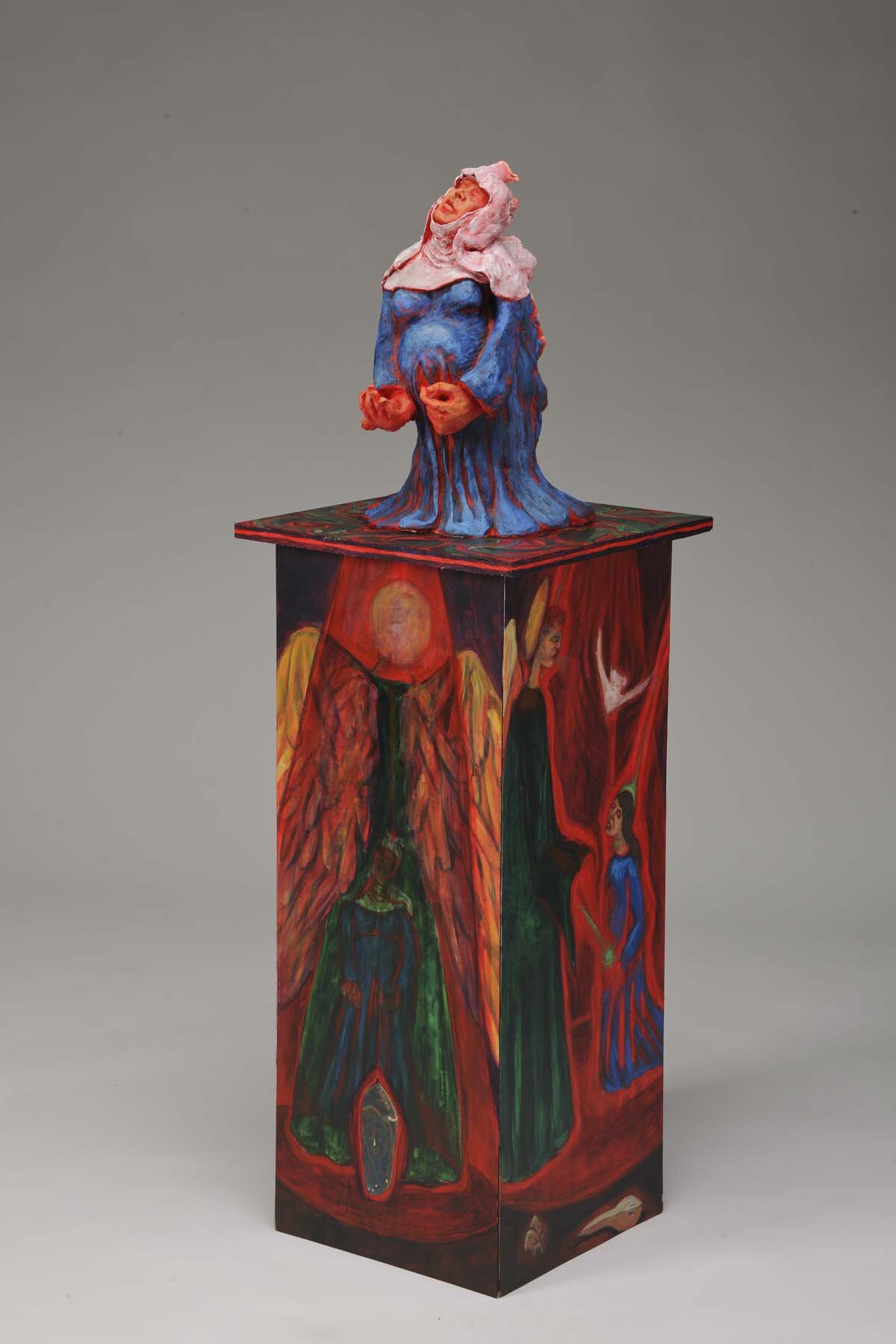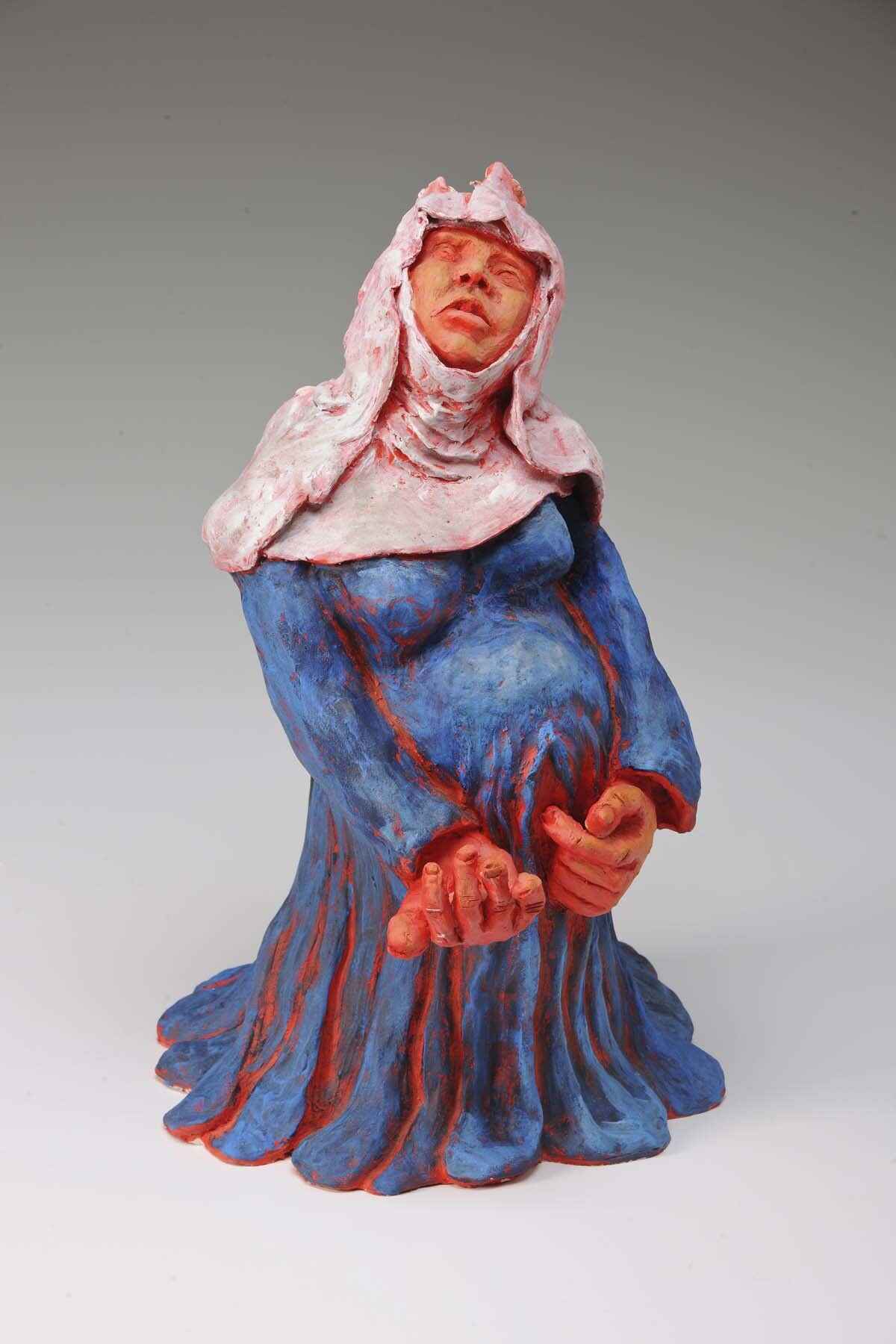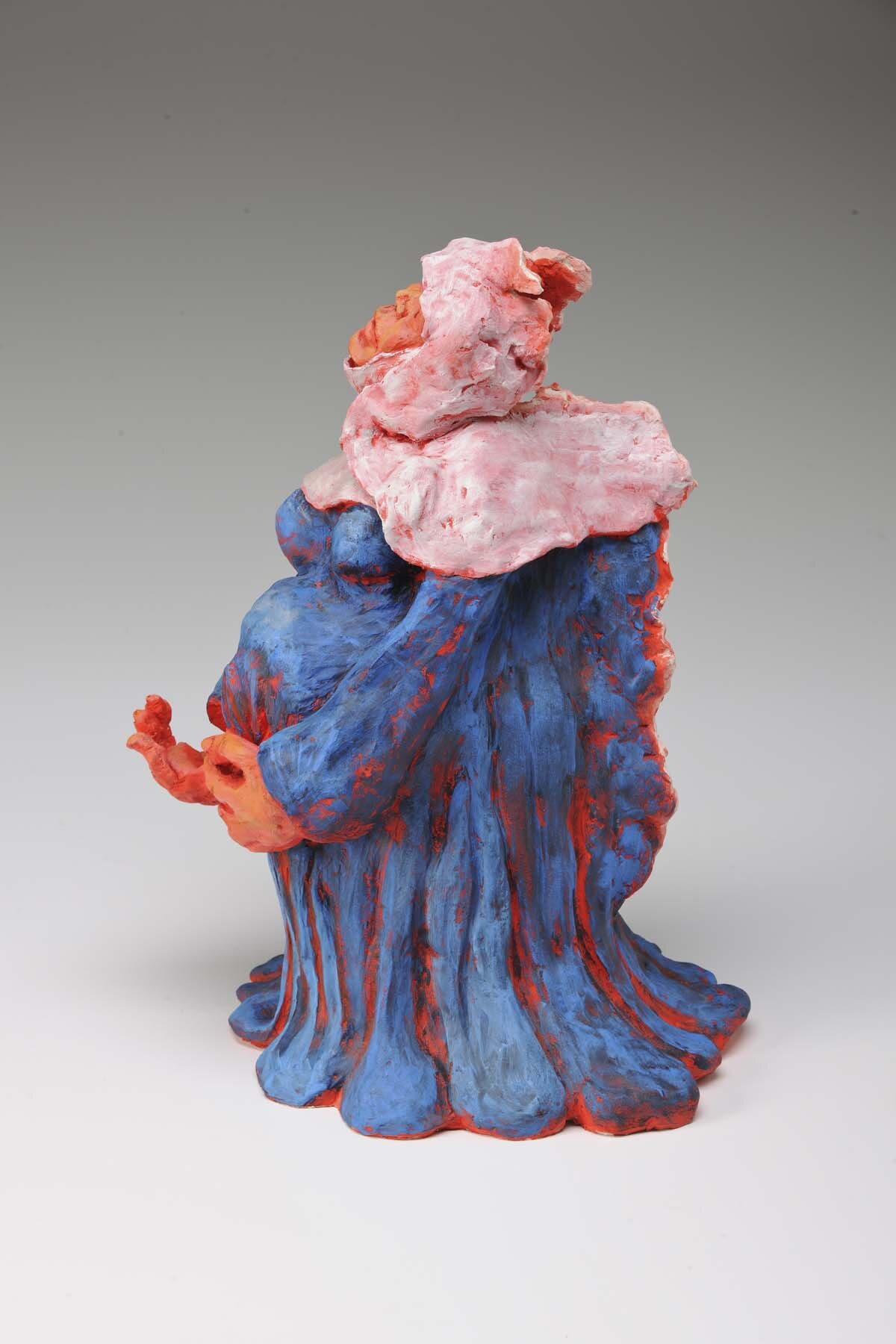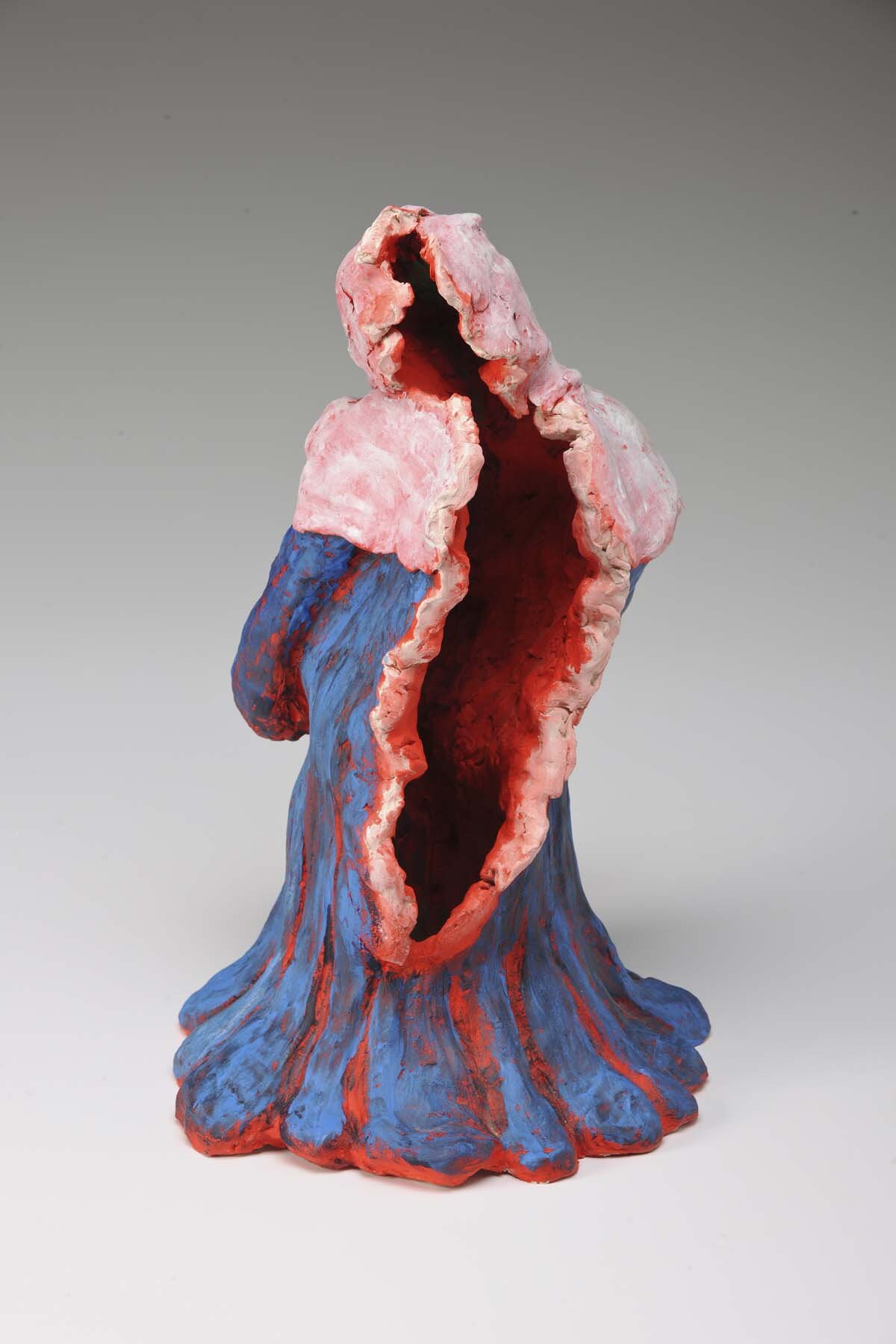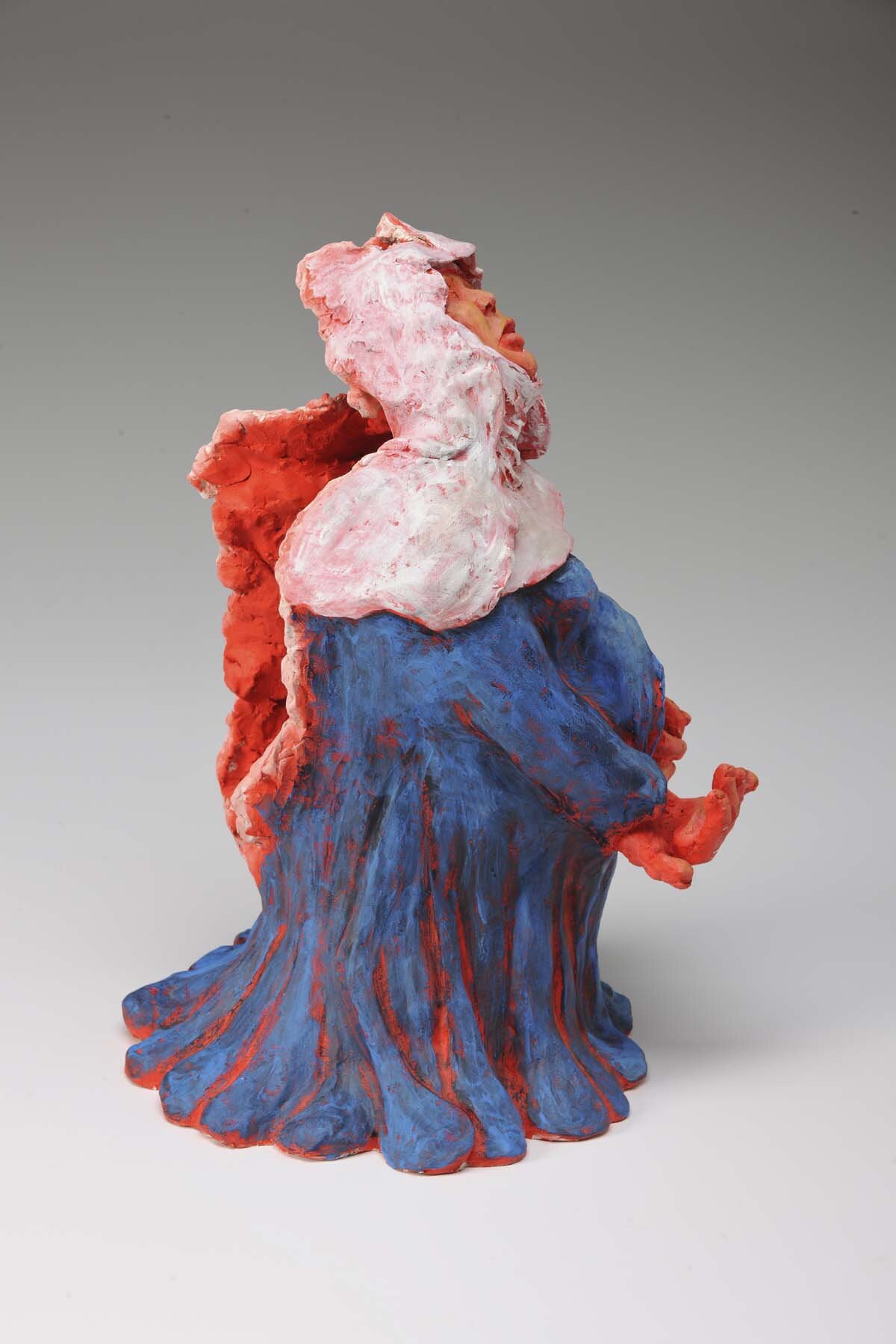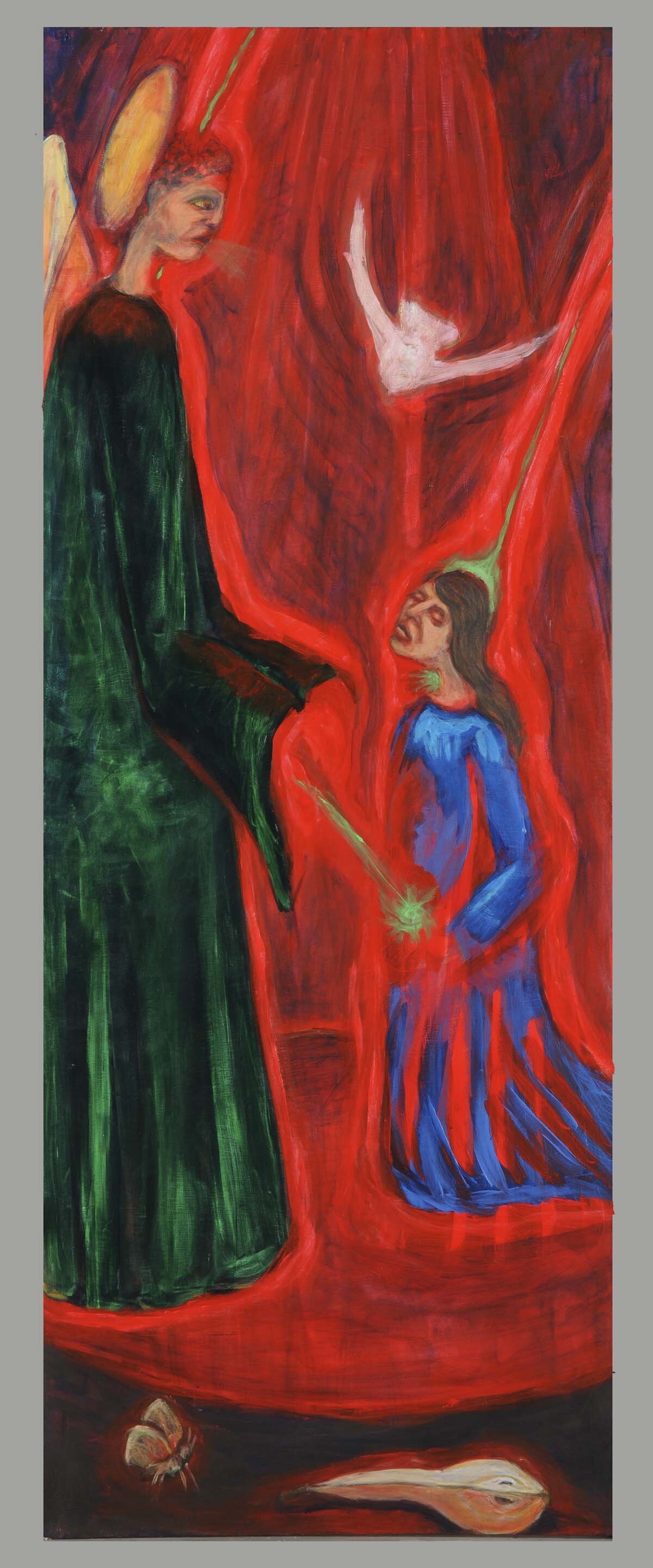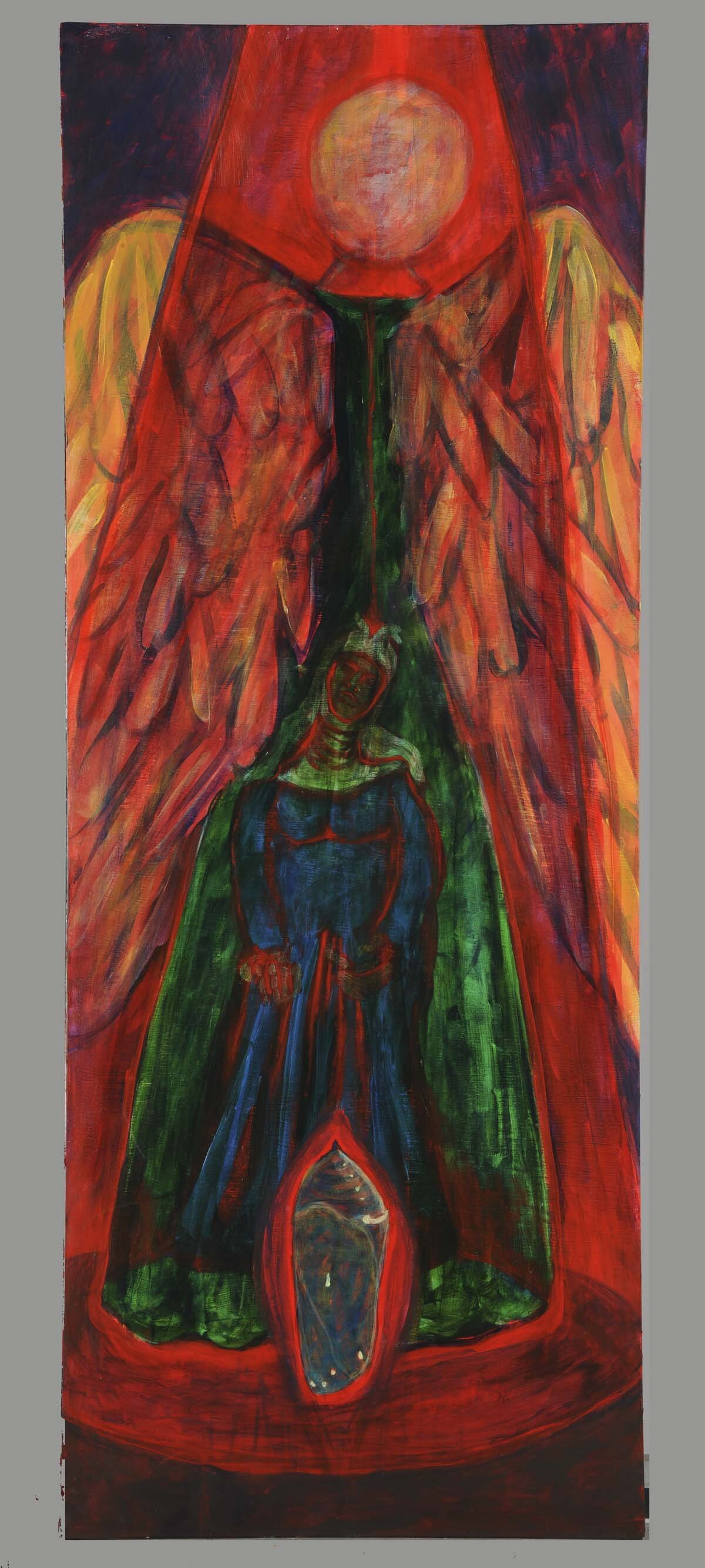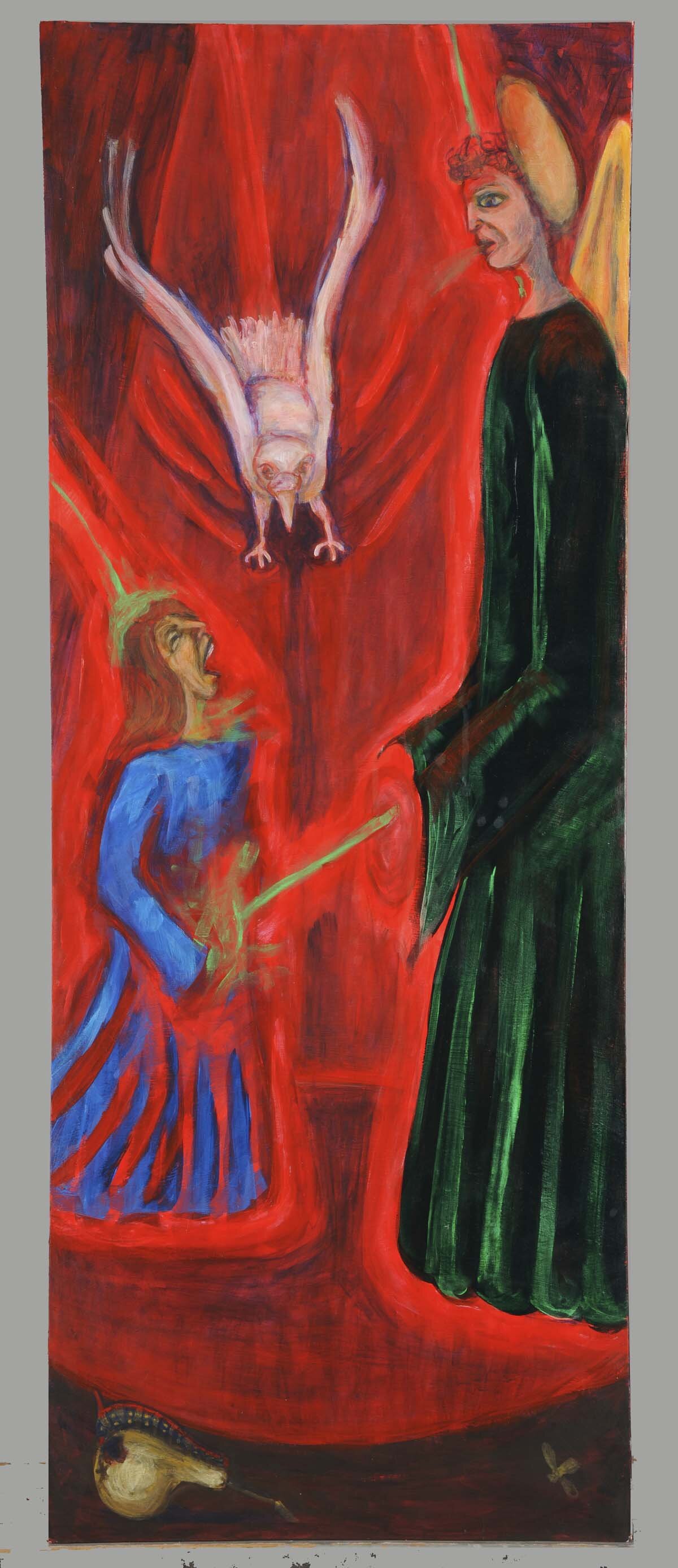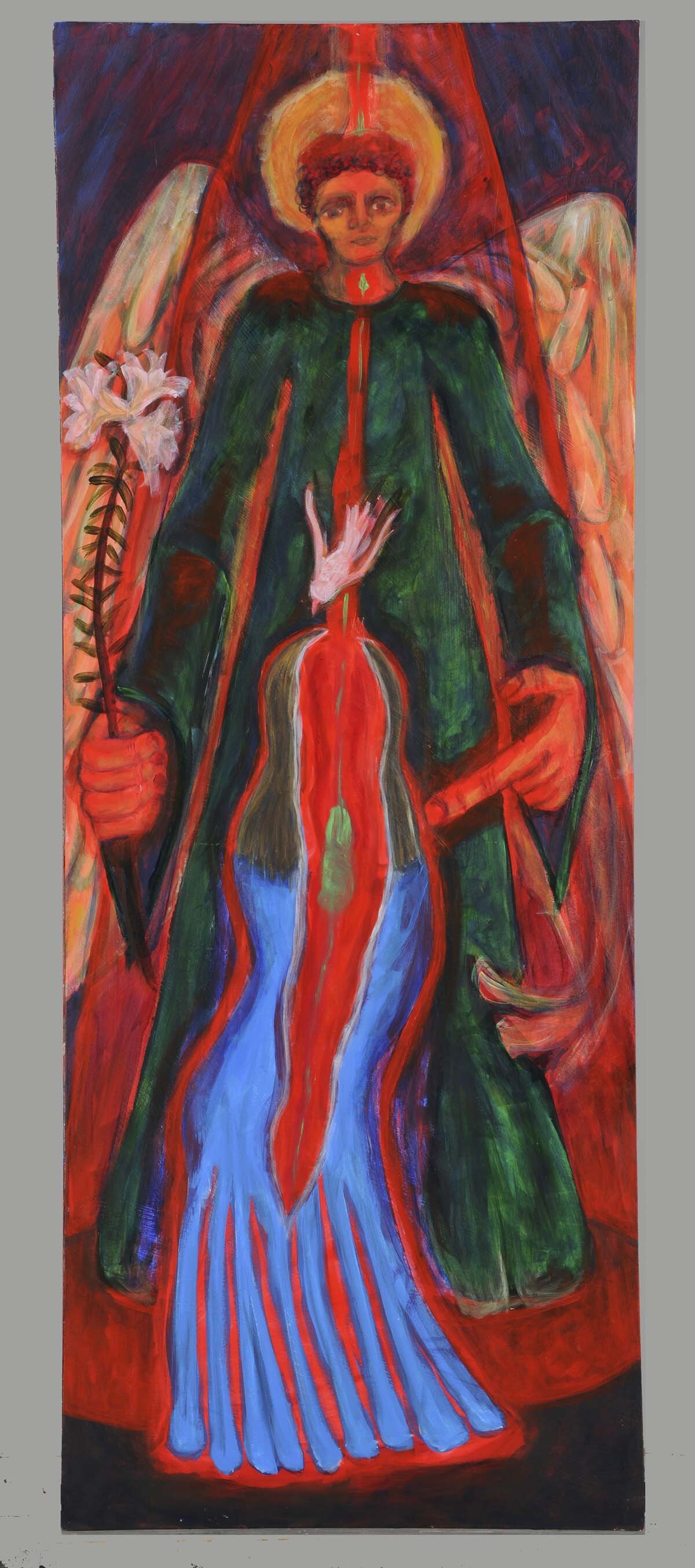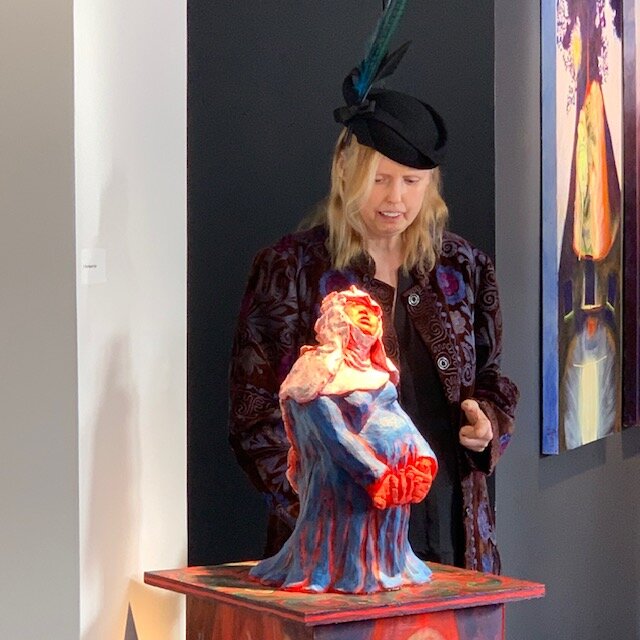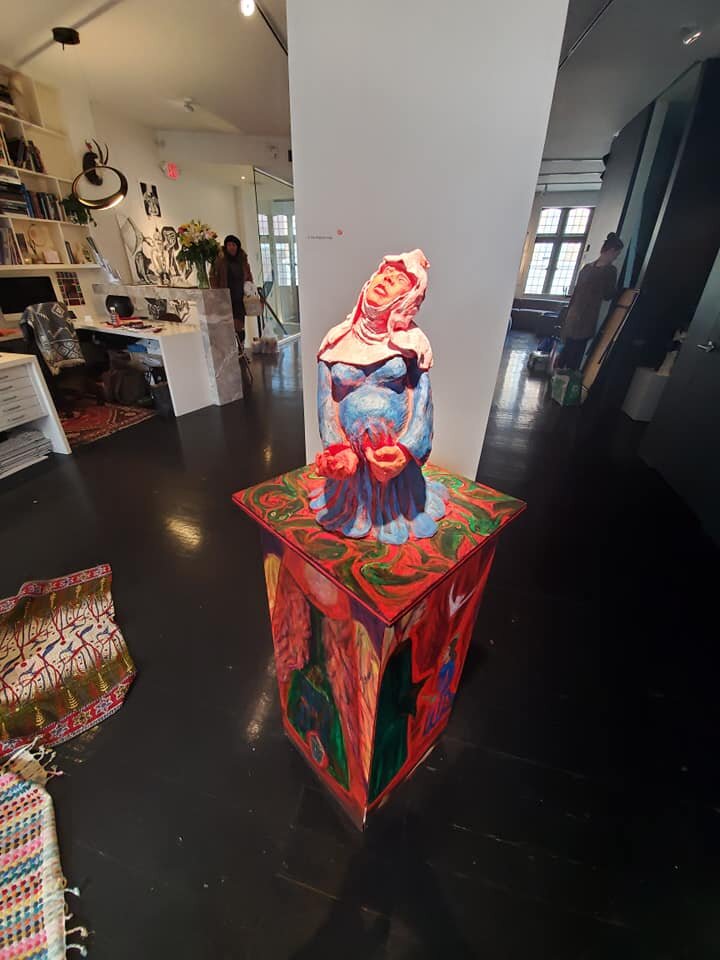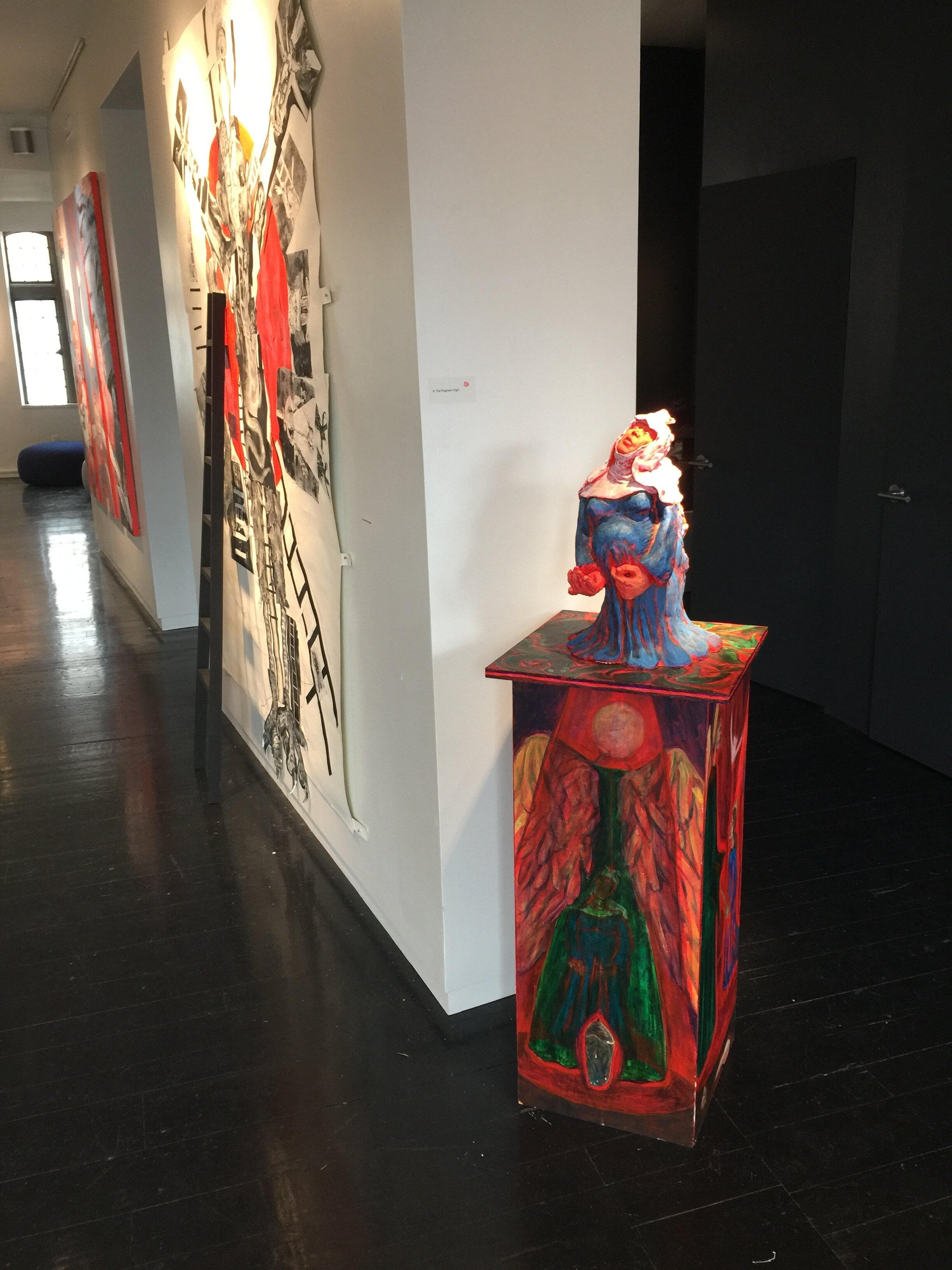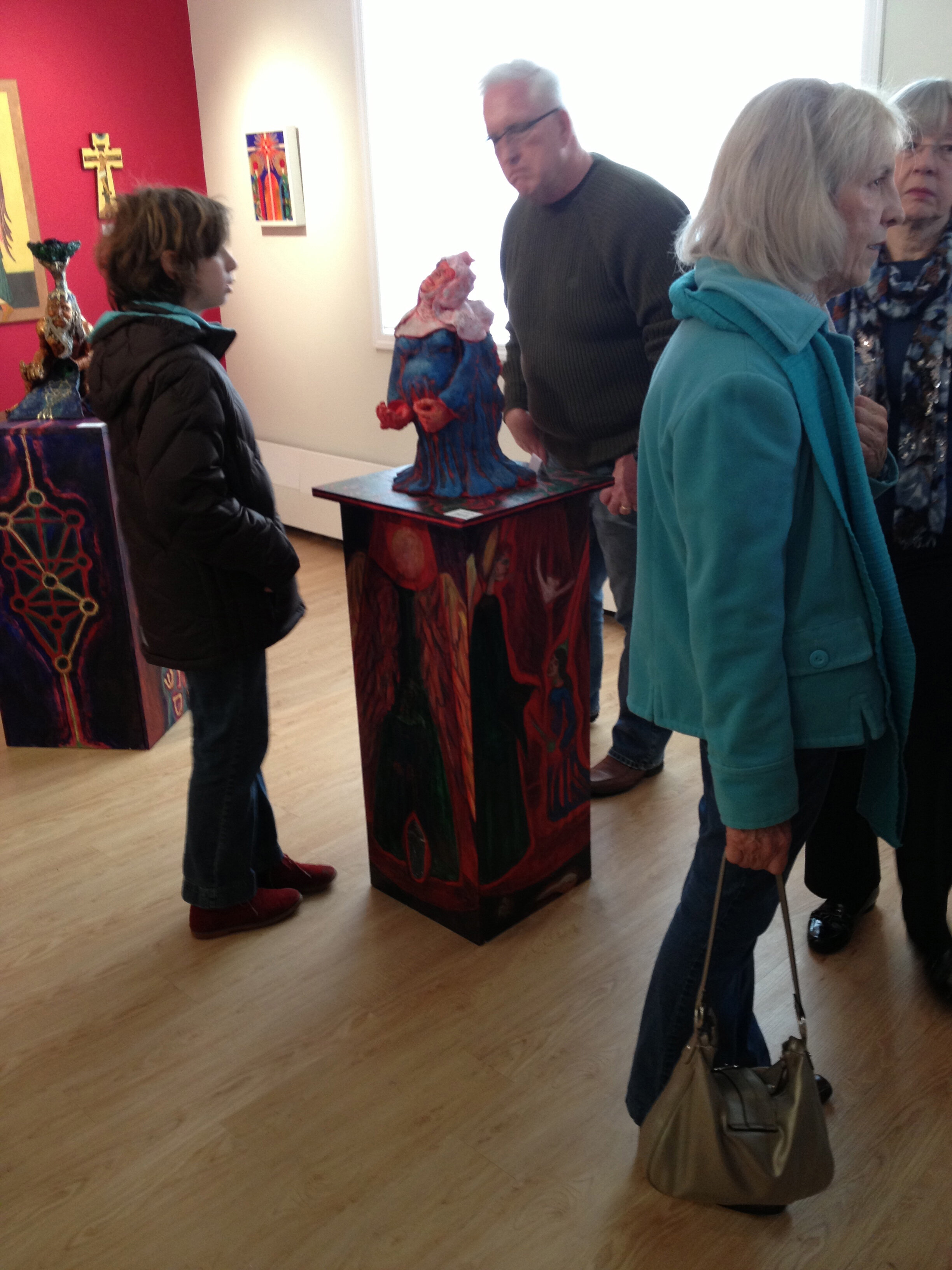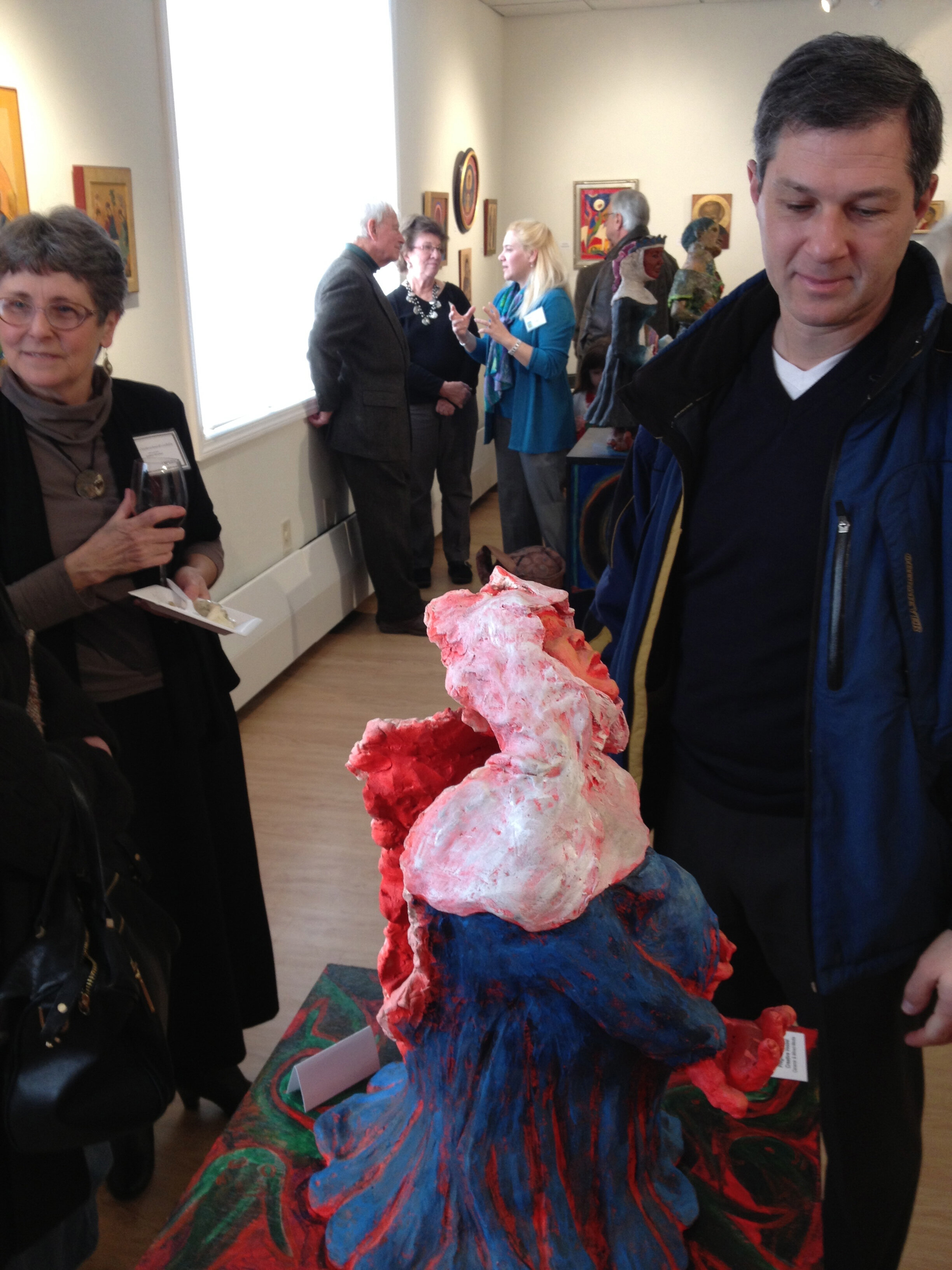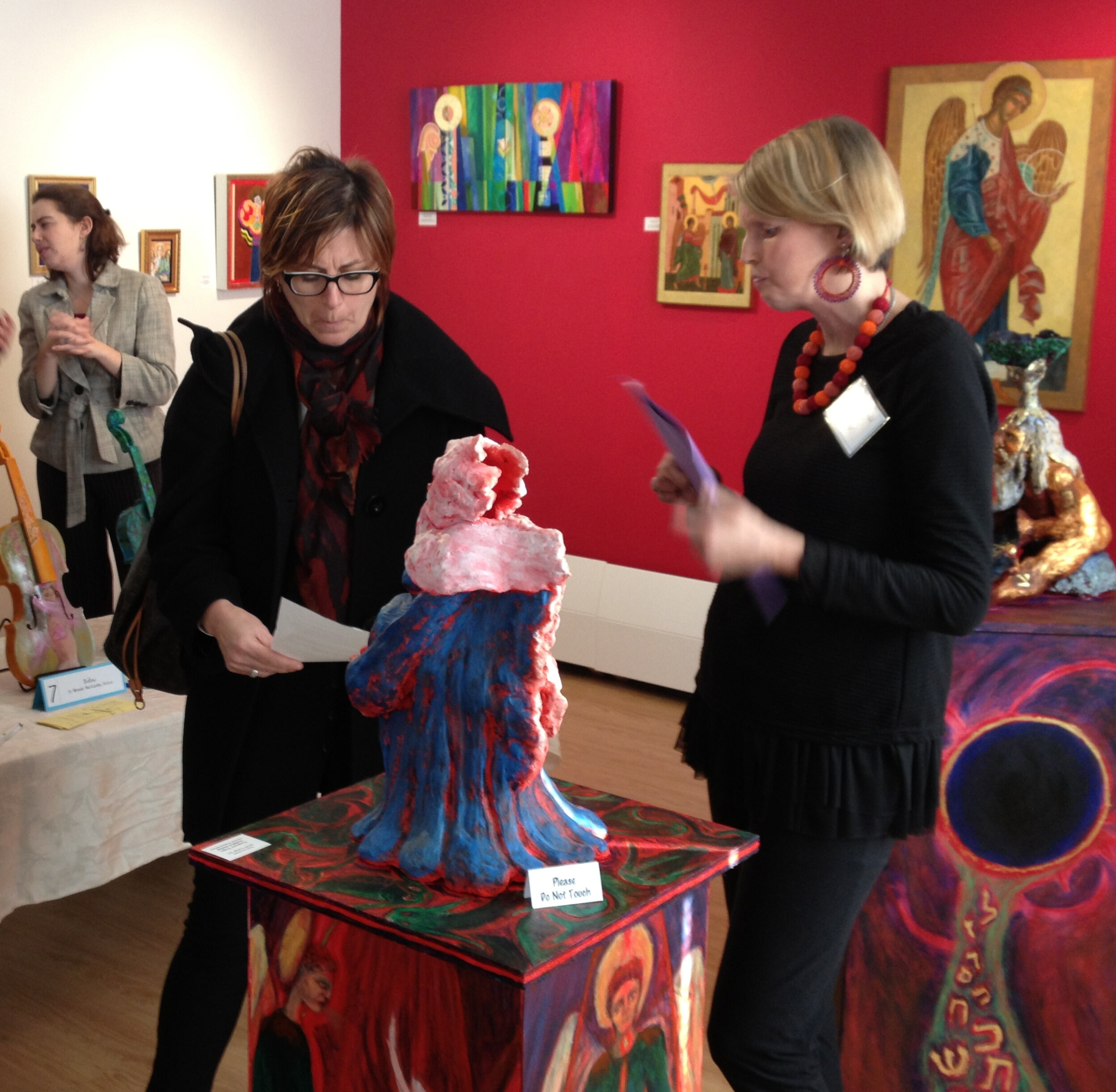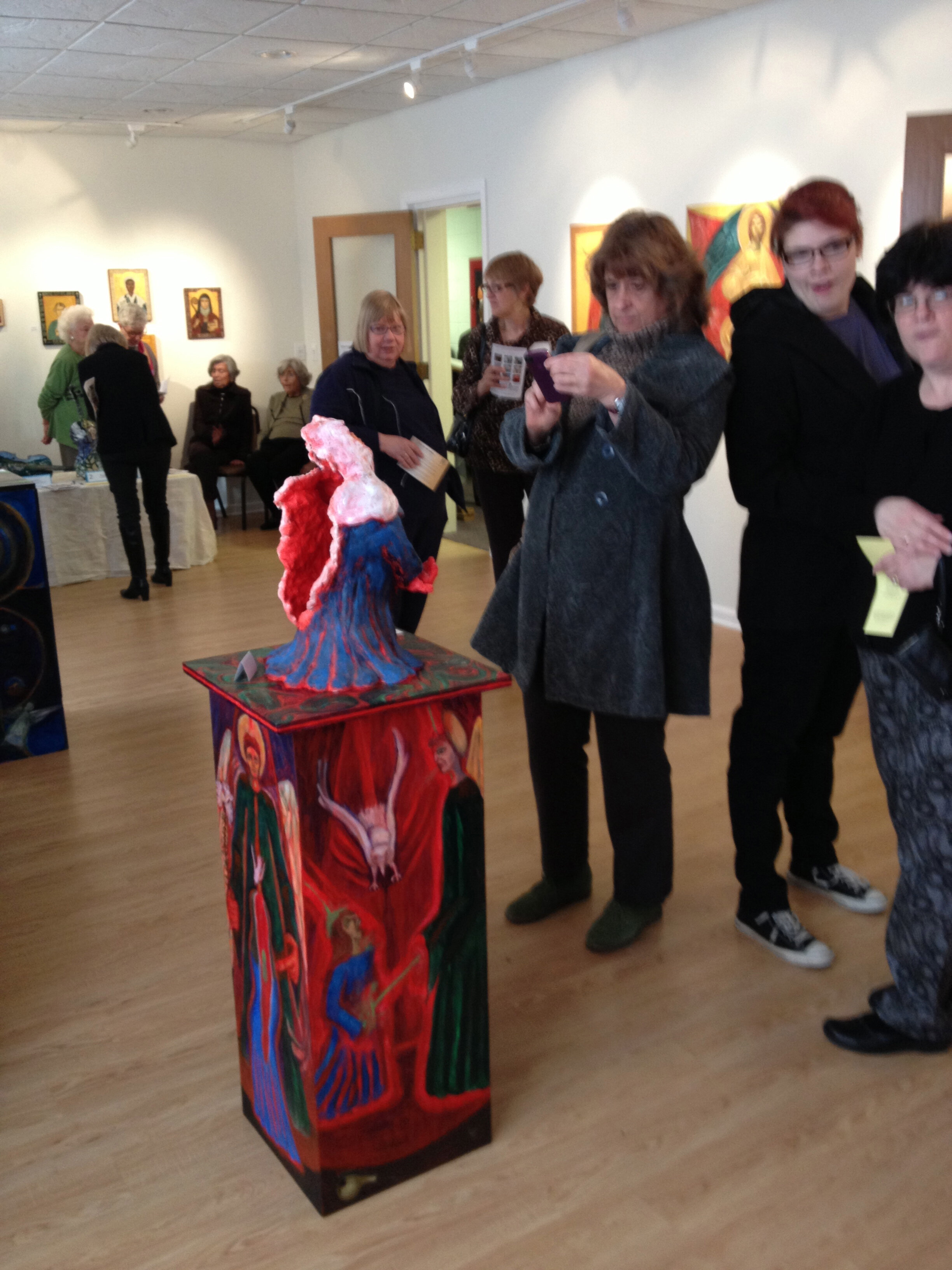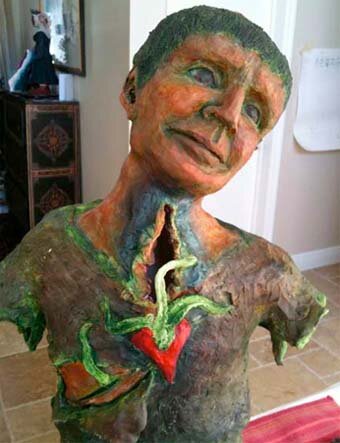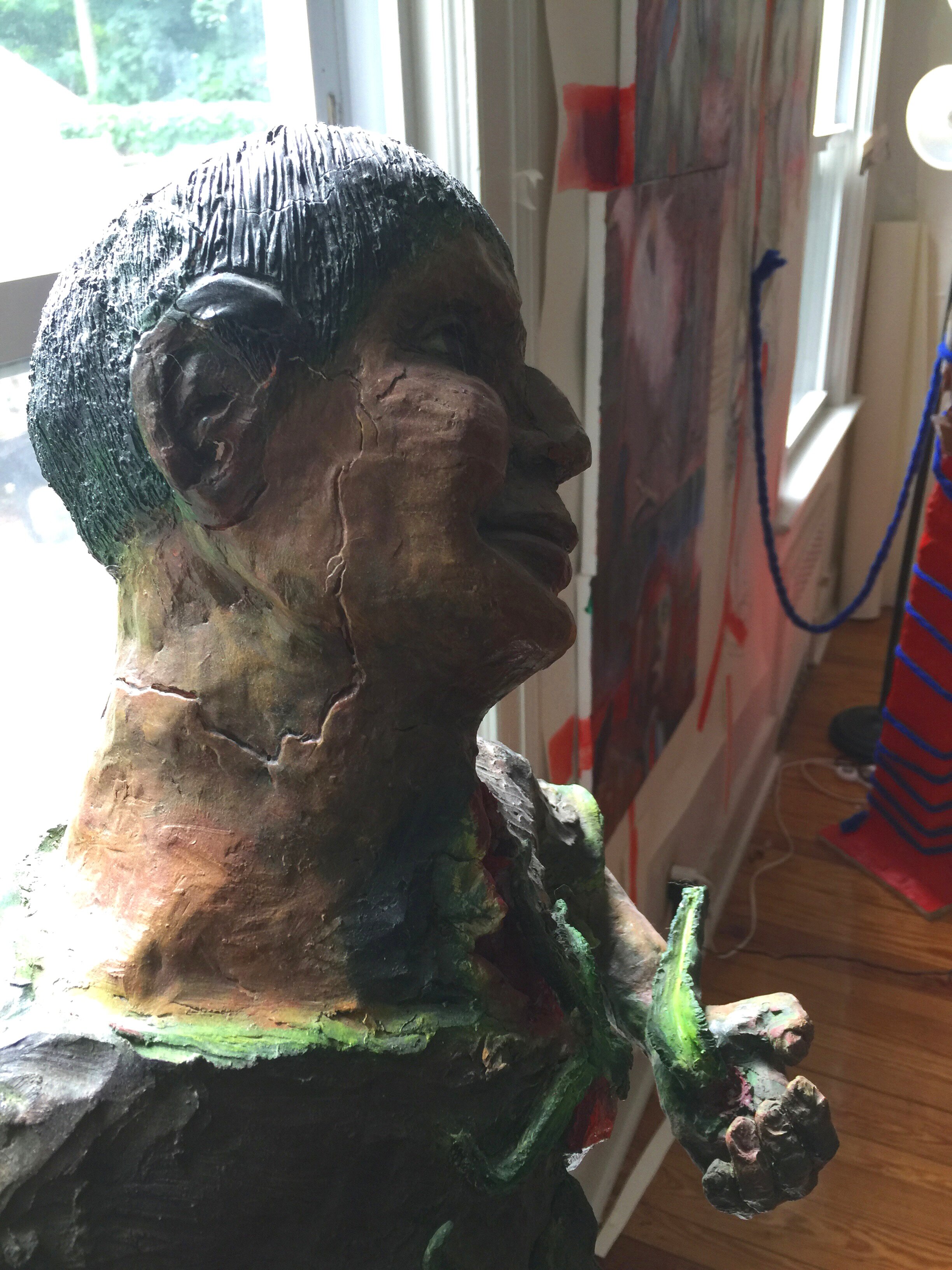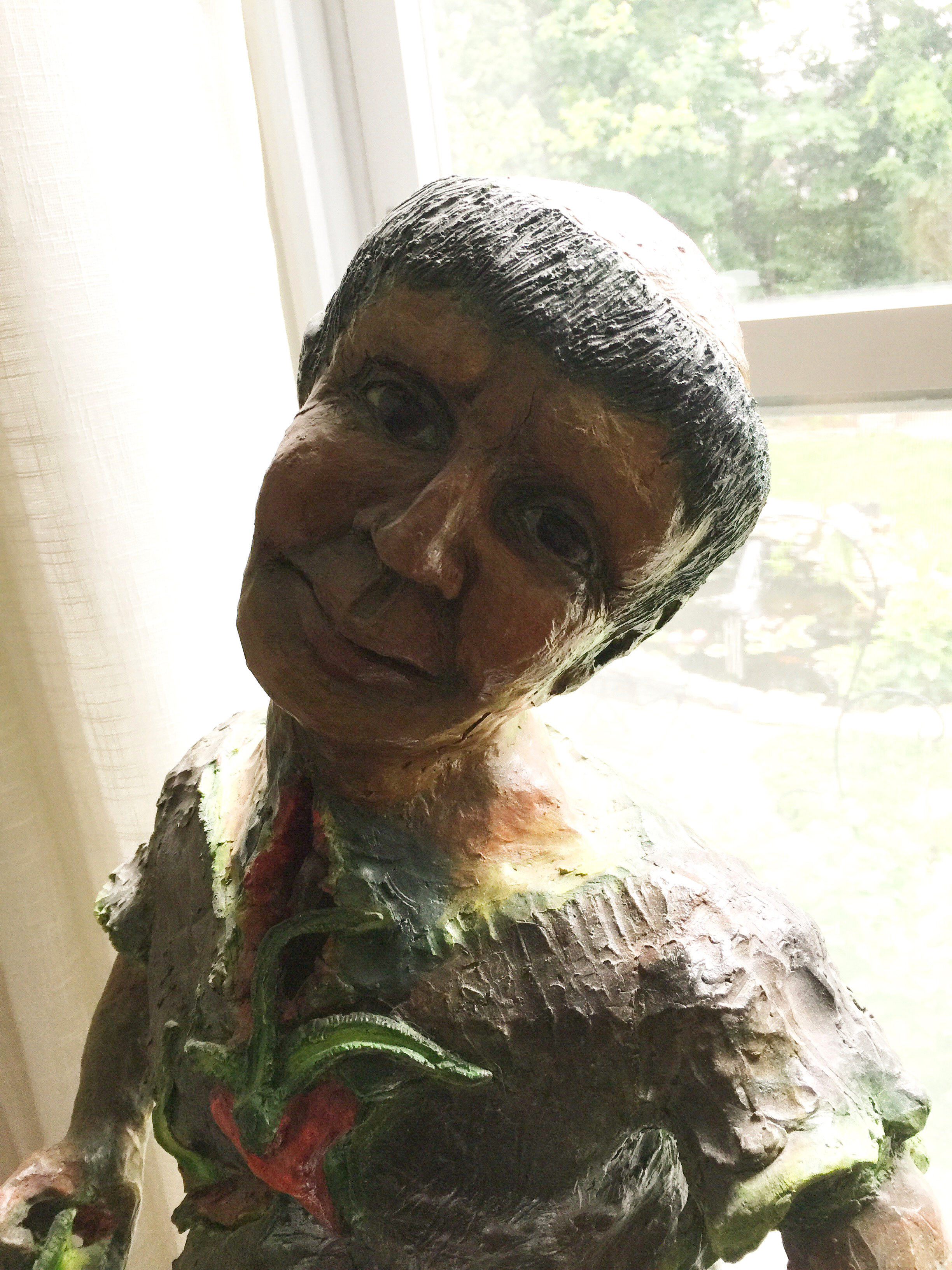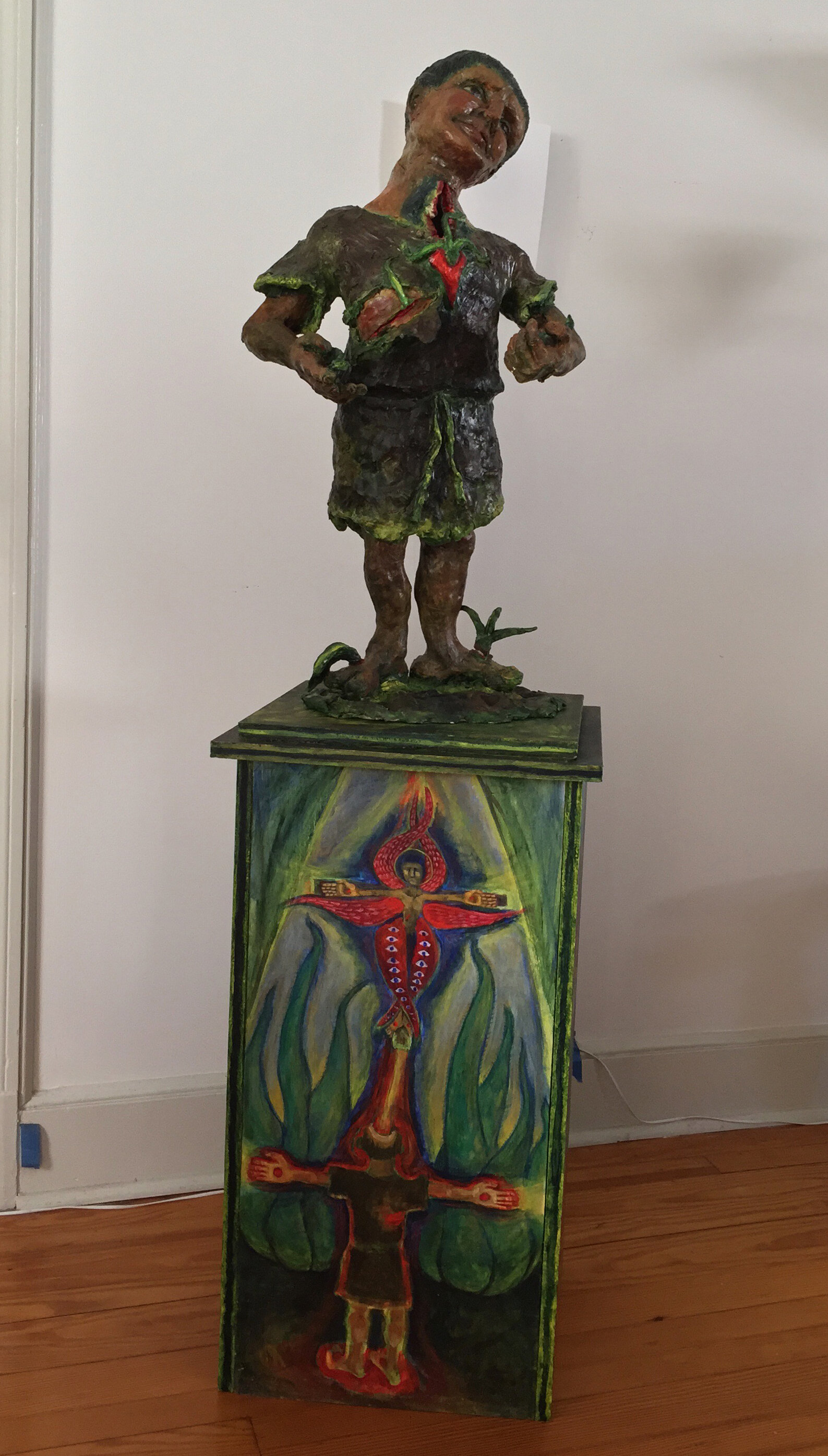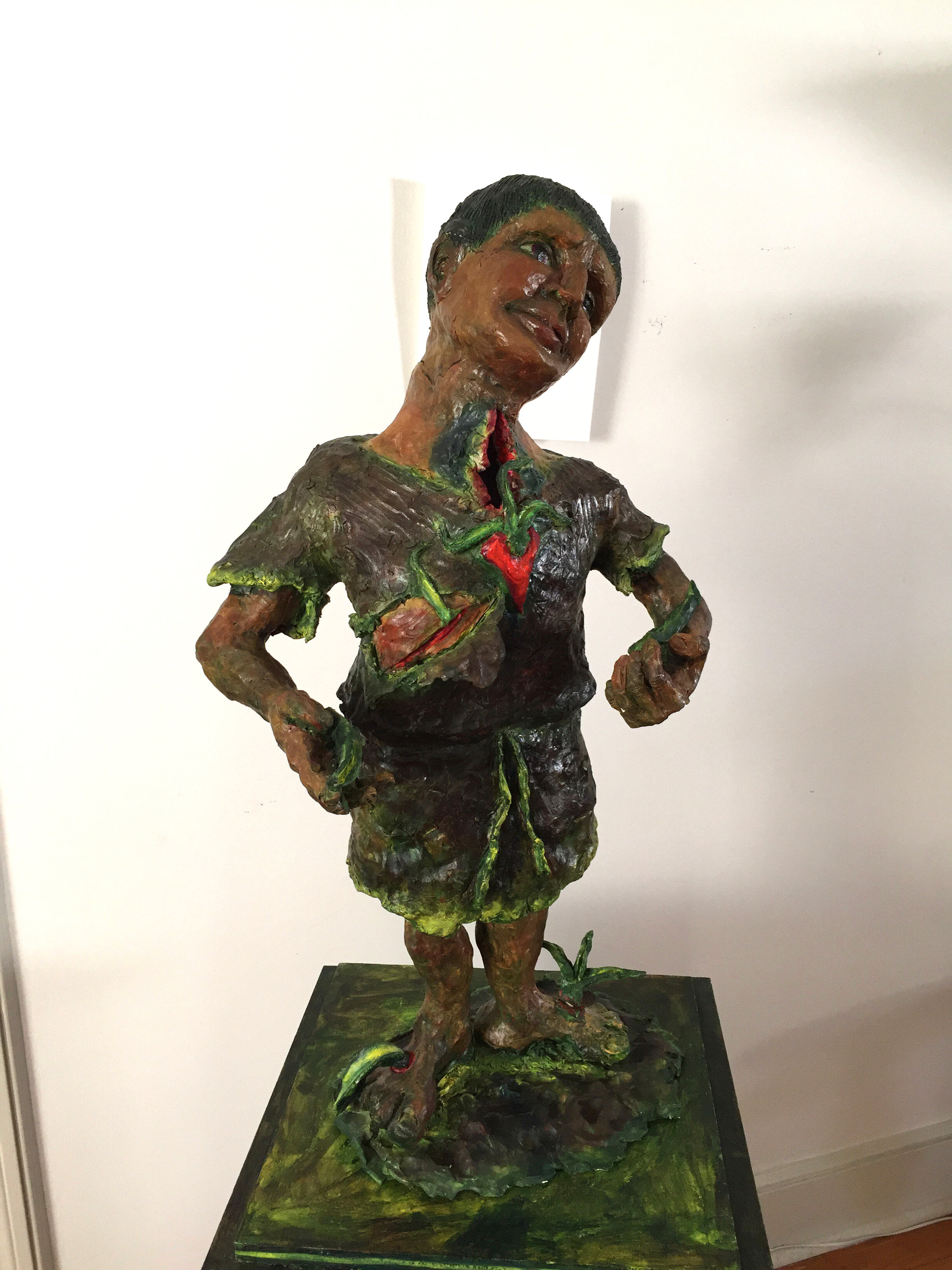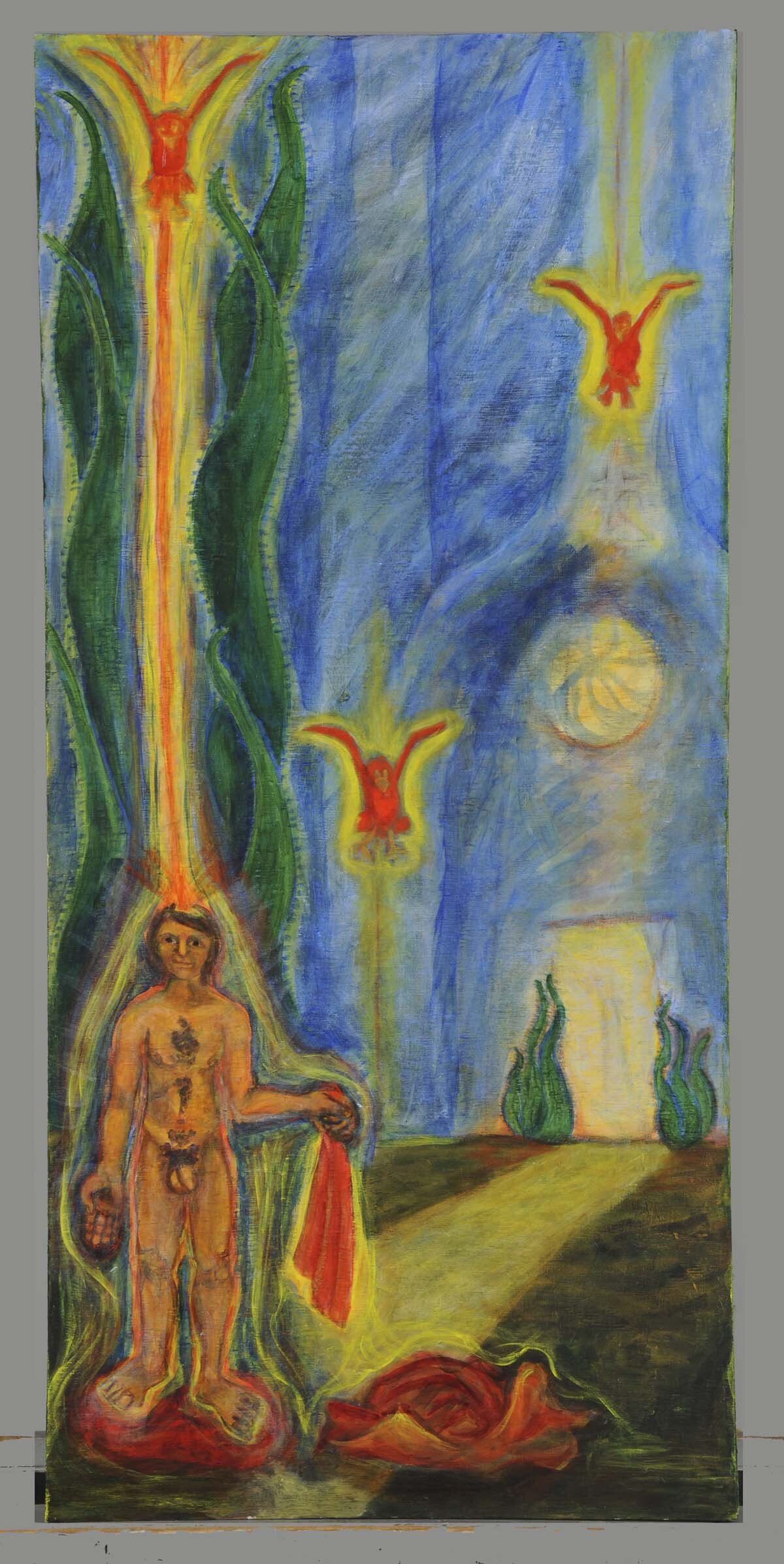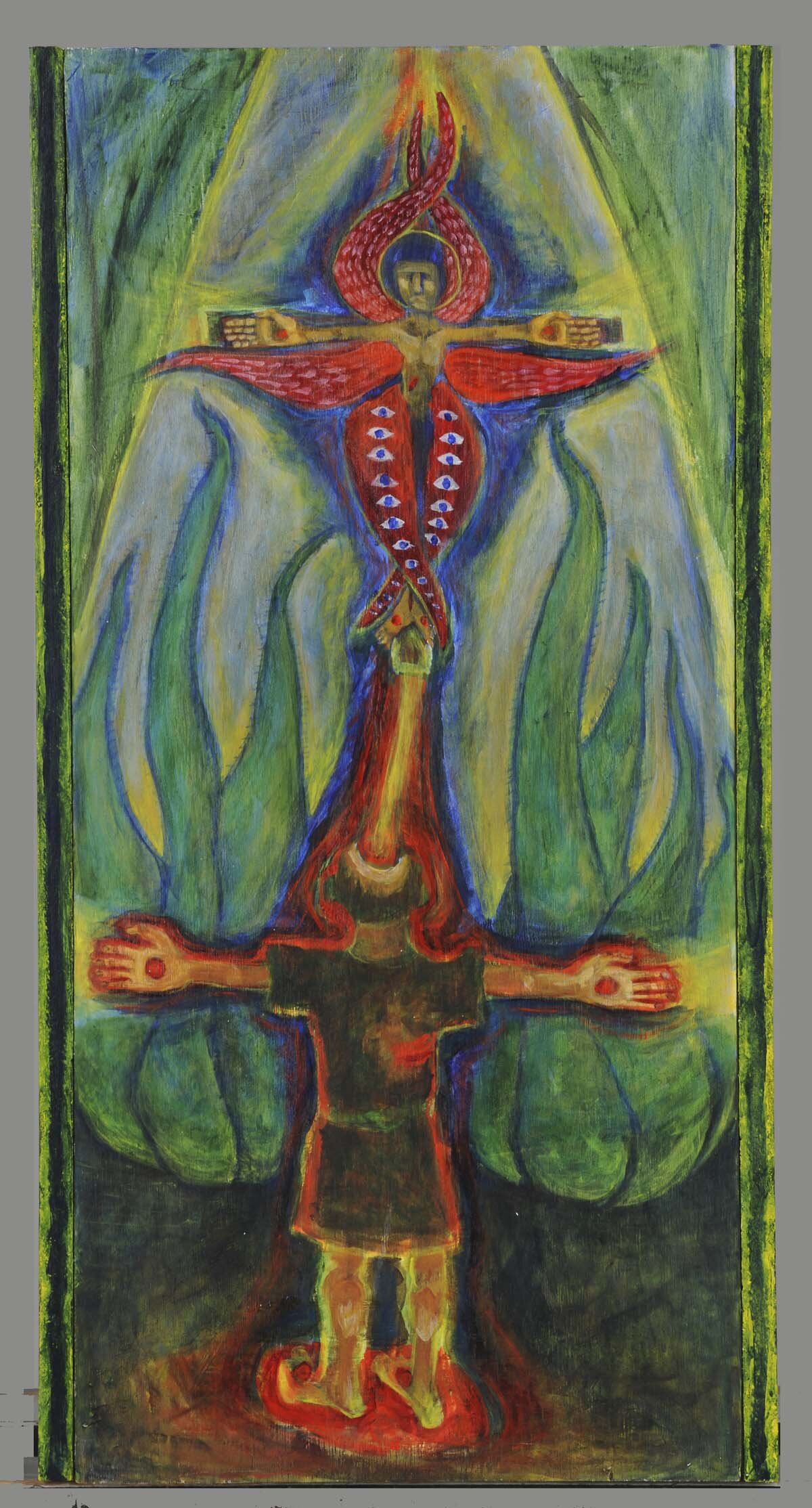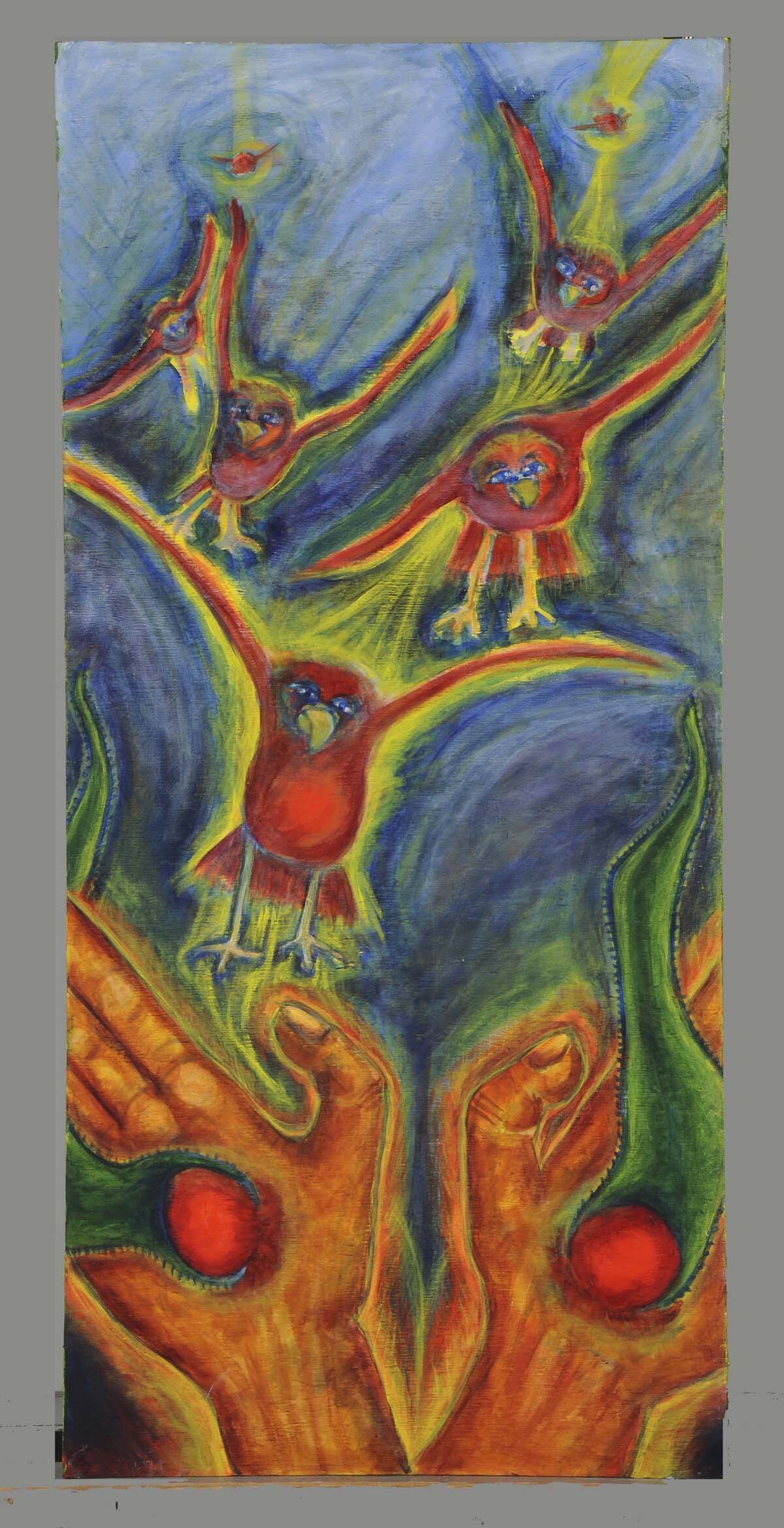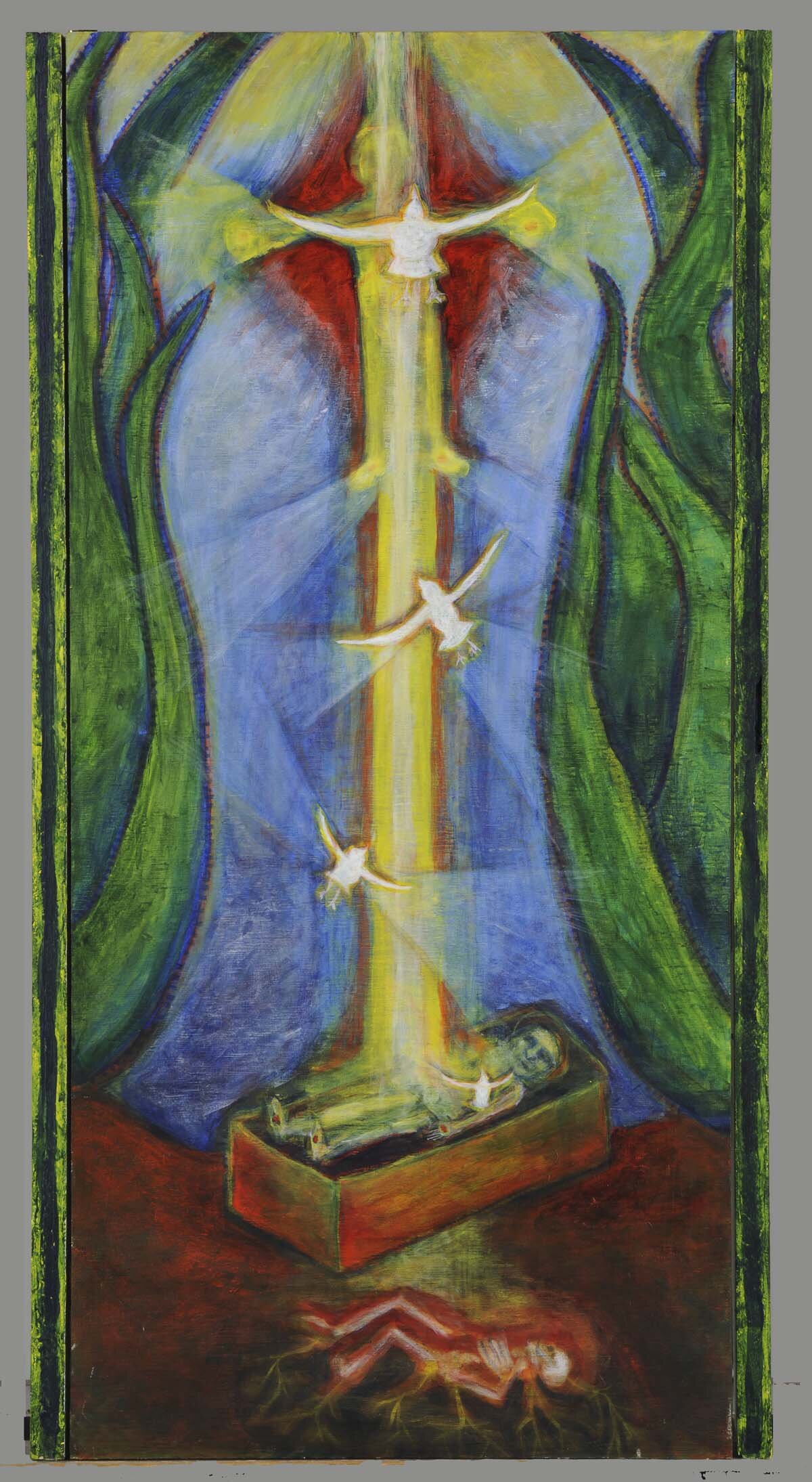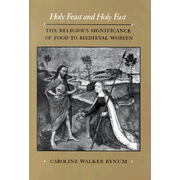This is the story of the sculpting, breaking and repair of my St. Francis of Assisi sculpture and how it parallels my own spiritual transformation. Story below the images.
Sculpture prior to breaking

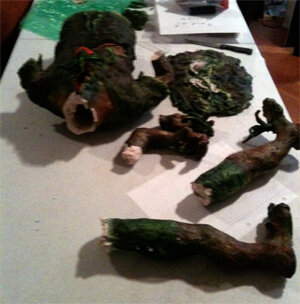
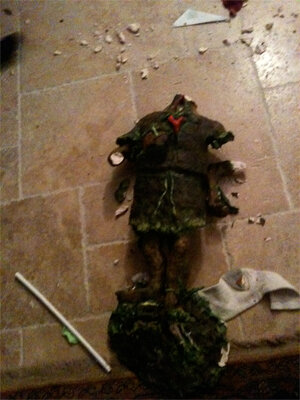
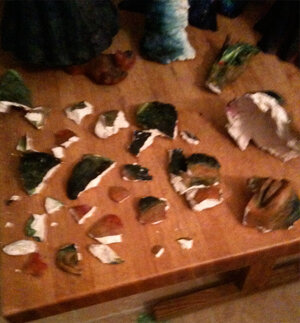
St. Francis Sculpture after being broken
Work in process
Something in me responds deeply to St. Francis and his life. When I contemplate him, I immediately feel more myself because he was so completely himself. He did nothing out of obligation or appearances, only out of freely given service. When I open to him, I see who I am and my own struggles but I see them through the larger lens of love. My vision of what my own story means expands and I am healed.Making this sculpture was a remarkable spiritual journey. Francis was the first piece I started in my Earthen Vessel Series and also the longest to come to completion. The first time I thought he was complete, he had no arms (See image to right) .At that time, I was quite ill and confined in body and spirit. I had not yet found the confidence to act in my art and fully express my vision. Hence the his lack of hands, a symbol for our ability to act in the world.
I next sculpted the Pregnant Virgin: A Creative Vessel. (images top left). It was a liberating experience for me. As the Virgin Mary's back is open to receive, so I opened and for the first time in many years and felt complete freedom and harmony in creating. Then when I looked back at St. Francis, I knew he needed arms though at the time I was not conscious of why.I added arms and I also painted his pedestal. It was the first of the series to have a completed pedestal and I was so excited to see my vision fulfilled.Then my life changed dramatically. My family and I decided to move from Florida to the Northeast and in the tussle of the move, Francis fell over and was shattered. When I saw him scattered across the floor, I was not immediately upset. My first thought was, this is me. I am scattered and broken just as Francis. On a deep level I knew that repairing this sculpture was a necessity, that it was integral to my spiritual development. Somehow I felt that once it was repaired something in me would have been repaired. So, I collected every piece like a treasure and saved them.Several attempts to fix him shortly after the fall met with no success. Something always failed to work or got in the way. Finally in September of this last year I enrolled in a sculpture class so I could get some ideas on what to do. The teacher was able to suggest something, but almost the next day and before I could do anything, my heart went haywire. I went through 3 months of complete agony as my heart raced and danced unrhythmically in my chest. I could barely leave bed. It was this forced seclusion, like a desert sandstorm scouring the landscape clean, that left me a new more whole person. It stripped away the past and located me squarely in the here and now for the first time in my life.Shortly after emerging from bed I began to work again. As I started painting, the flood gates opened and I knew it was time to return to Francis. This time, his shattered parts came together with ease and he was repaired.
When the Japanese mend broken objects they aggrandize the damage by filling the cracks with gold, because they believe that when something’s suffered damage and has a history it becomes more beautiful.– Barbara Bloom
My sculpture is not the same as before it broke, but it is richer in meaning. I did not mend his cracks with gold like the Japanese, but I left the scars of his fall visible. This sculpture now caries a deeper message about the value of wounds in our lives. It also carries the charge of my own healing captured in the creative act of making this piece. Please forgive the terrible photos. The colors did not translate and I will get quality images taken soon but I hope they will give you an idea of his repair. The arc of this sculpture's journey illuminates a deep truth: sometimes we must be broken because we are too small. And more importantly, that the act of breaking is an act of love because the breaking brings the possibility of true and deep healing. We are meant to be bearers of the Light but our beliefs and ways are often too small for our aspirations. Thus, we must be broken so we may be reformed as a greater more loving vessel, so we are able journey where our hearts desire.This sculpture's journey, also parallels St. Francis' own life's story. He was a nobleman with every advantage who went to war. But while away, he was imprisoned and became very ill. An early biographer, St. Bonaventure’s (1217-1274 CE) wrote in The Life of St. Francis :
Since affliction can enlighten our spiritual awareness (Isa. 28:19), the hand of the Lord came upon him (Ezech. 1:3), and the right hand of God effected a change in him (Ps. 76:11). God afflicted his body with a prolonged illness in order to prepare his soul for the anointing of the Holy Spirit.
His illness changed him. It broke him of his privileged life and when he returned to Assisi he could not continue as he had before. In the end, he stripped off his clothing in the center of town and, naked, left his wealth and family behind (See pedestal panel to the right: St. Francis Renounces Worldly Goods). But it was his very brokenness from war and illness, a seeming tragedy, that allowed him to reform and be the amazing example of love he eventually became. Later in his life, St. Francis received the stigmata, the sacred wound of Jesus' crucifixion. At that time he became a physical symbol of the connection between brokenness and love. Bearing the stigmata softened him and deepened his compassion. It connected him to the Artist (my name for the divine) and to the unceasing flow of divine creativity. But at the same time it anchored him securely in the physical world and reminded him always that he had a body; that he was here to be and act in the physical world. That he bore that anchoring pain without suffering over it, is part of what made him extraordinary. For more on this see my post on St. Francis' story of perfect joy.
Our own experiences of pain and brokenness are mirrored for us by St. Francis’ life and also by the stigmata that he bore. I planted aloe vera in his stigmata to illustrate the healing power our wounds can bring to our life. Our brokenness and wounds leave their mark but free us to become greater than we are. Making this sculpture and taking a parallel journey from brokenness to wounded wholeness has freed me. This sculpture was the key to unlocking an unconscious mental cage I was inhabiting. I am forever grateful to St. Francis and the shining example of his life. With love, Sybil

